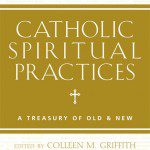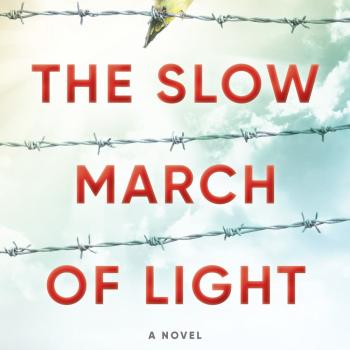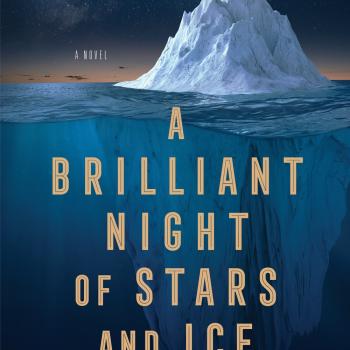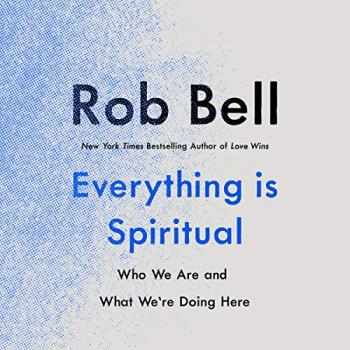 How do we learn to gracefully embrace aging? That is the question spiritual director and author Paula Huston contemplates in her new book, A Season of Mystery: 10 Spiritual Practices for Embracing a Happier Second Half of Life. Huston, a 60-year-old grandmother and caretaker for her mother and in-laws, shares the wisdom gleaned from her own experience of wrestling with the challenges and disappointments, as well as openings for growing closer to God, in this particular season.
How do we learn to gracefully embrace aging? That is the question spiritual director and author Paula Huston contemplates in her new book, A Season of Mystery: 10 Spiritual Practices for Embracing a Happier Second Half of Life. Huston, a 60-year-old grandmother and caretaker for her mother and in-laws, shares the wisdom gleaned from her own experience of wrestling with the challenges and disappointments, as well as openings for growing closer to God, in this particular season.
We invited Paula to share more about her book and the unique opportunities the second half of life present us, as people of faith.
What are the biggest spiritual challenges for people in their second half of life?
 They are legion! There is the temptation to cling fearfully to what we are losing: youthful strength and energy, social status based on a career we no longer have, beloved spouses, relatives and friends who are rapidly passing away. There is the temptation to become bitter about these losses and to rage against the changes that have been foisted upon us. And there is the temptation to fall into a state of chronic grief and despair. Interestingly enough, these are all versions of the Eight Evil Thoughts laid out by the fourth century spiritual master Evagrius of Ponticus — a list that centuries later became the Seven Deadly Sins of Medieval times. Fearfully clinging to the past, Evagrius would say, has a deep root in vainglory; we can’t bear to give up whatever public acclaim we once enjoyed. Bitterness grows out of self-pity, which the ancients referred to as “sadness.” And despair is one attribute of acedia, or the spirit of futility. All of these have the power to derail faith right when we most need it, but often we are facing these challenges with seriously diminished capabilities.
They are legion! There is the temptation to cling fearfully to what we are losing: youthful strength and energy, social status based on a career we no longer have, beloved spouses, relatives and friends who are rapidly passing away. There is the temptation to become bitter about these losses and to rage against the changes that have been foisted upon us. And there is the temptation to fall into a state of chronic grief and despair. Interestingly enough, these are all versions of the Eight Evil Thoughts laid out by the fourth century spiritual master Evagrius of Ponticus — a list that centuries later became the Seven Deadly Sins of Medieval times. Fearfully clinging to the past, Evagrius would say, has a deep root in vainglory; we can’t bear to give up whatever public acclaim we once enjoyed. Bitterness grows out of self-pity, which the ancients referred to as “sadness.” And despair is one attribute of acedia, or the spirit of futility. All of these have the power to derail faith right when we most need it, but often we are facing these challenges with seriously diminished capabilities.
How did you decide to write this book?
Joe Durepos of Loyola Press proposed the idea to me over a year ago. He asked if I’d be willing to “follow” the narrator (a.k.a., myself) of my 2003 book called The Holy Way: Practices for a Simple Life into a new phase: aging. He and I are of the same era, and both of us had noticed a definite shift in how we were now seeing the world, our relationships with other people, and ourselves. We had less energy than we used to, which felt like a loss, but the up side was that it was a lot easier to set priorities and let unnecessary stresses go. We both felt a little wistful about our lost youth, true, but we also felt calmer, more centered, and more at home on the earth. I took a few months to think about his proposal, and during that time I realized that it was not only my own stage of life I could talk about but also the generation that was passing away before my eyes: the generation that included my parents and in-laws, my monk friends in their eighties, and other remarkable beloveds in their ninth decades. That’s when I really got excited about this project, which seemed to be a way I could not only celebrate these well-lived lives but consciously draw upon their wisdom. And soon I was realizing something else: our older years are meant to be our spiritually richest years, but far too often, we squander them because we’re too busy trying to hang on to youth.
What are the gifts of the second half of life, and how can we more fully embrace them?
I have to admit that until I began this book project, I had not given these alleged gifts much thought. If anything, I dismissed them as wishful thinking, if not sentimental nonsense. What on earth could possibly be good about bad knees and aching hips, cataracts, or short-term memory loss? When you really took stock of what happens to the minds and bodies of the old, you’d have to be either blind or crazy to want that for yourself. But as I began to delve into the question — what’s good about getting old? –and especially as I began seeing my aged friends and relatives through this new lens, all sorts of benefits to aging became clear. First, as we get older, we are released from the enormous pressure to “prove ourselves” in a highly competitive society. Second, we have pretty well experienced it all by now and so we are far less shocked by the difficult contingencies of life. And third, we’ve finally got the time to be still and reflect. These are the privileges of elderhood, if only we can allow ourselves to claim them. I believe they are ours by design: they are meant to open us up spiritually to what is coming next.
You mention the two cultural myths we buy into about aging. What are they and why are they problematic?
I think the first myth is so deeply imbedded in our cultural mindset that we don’t even think to challenge it anymore. This is the notion that we can somehow, through the wonders of technology, “beat” old age and death. That if we swallow enough Omega 3 supplements, or work out long enough on the elliptical, or endure enough Botox injections, we can stay forever young. The second myth, more subtle, is predicated on our Western belief that the purpose of life is to get what we most want before we die, so if we have unrealized ambitions, it is our duty to bring ourselves into full blossom as quickly as possible. This is the one that inspires seniors to create bucket lists or spend a lot of money on self-fulfillment gurus. Given our competitive, achievement-oriented culture, both myths are completely understandable, but the problem is, they distract us from what I’ve come to believe is the real purpose of aging: to open up spiritually as we prepare to transition out of the physical realm.
You talk about the opportunities that abound for a closer relationship with God in the latter half of life. What makes us more “available” in this season of life?
Ironically enough, the very losses that lead us into temptation can also open us up to the divine in a way we’ve never before experienced. For one thing, we’ve been disabused of any notion that we are running the world, so are more likely to leave things to God’s wisdom. We’ve become sadly aware of our essential human helplessness and therefore more disposed to relying on grace. We’ve been around long enough to realize that the old distractions — egoistic striving, romantic fantasies, seeking after money — just don’t fill the void, so we no longer have to fight our way through all these temptations in order to focus spiritually. And finally, we’ve learned about love: what it requires of us, its immense creative power, the sheer joy it can bring. I believe that in the second half of life, there is a natural, childlike gravitation to what is pure, holy, and full of love, if only we can gracefully let go of our youth in order to move toward the light.
Can you name just a few of the 10 practices you invite readers to consider in your book?
One of the most important ones for me personally is one I call “lightening.” I began this process well over ten years ago (the urge seemed to strike with a vengeance as I approached fifty), and it involves physically and mentally stripping down to the essentials. In my case, this has meant clearing out the clutter of years, giving away what I’m not using (including some things that have purely sentimental value), and generally making more space for less stuff and a more focused approach to life. Another important practice for me has been “listening,” which means abandoning the effort to write everybody’s script, including my own, and instead simply tuning in to what’s already happening. As the oldest of five, this has been a hard one for me! But the more I can do this, the more I am surprised by unexpected joy, even in the middle of hardship. A third practice — one that the elders among us have quietly abandoned as our culture has become increasingly youth-oriented — I call “generating.” This means consciously nourishing spiritual life and vocation in those coming after us. In my case, this has involved going back to teaching grad students in creative writing after a ten-year hiatus from academia. Some of the other practices in the book are “settling,” “confronting,” “accepting,” and “blessing.”
You are a 60-year-old woman and grandmother. What have you found to be the most challenging in your own second half of life? And what has been the most life-giving?
Oh, boy! I’m glad you asked this question because sometimes I worry that, based on the kind of books I write, people must think I live a hermit life and spend my days in meditation. At 60, however, I have never had more family responsibility. My 90-year-old father-in-law, who is on Hospice, lives seven minutes away. My 85-year-old mother, also on Hospice, is in her last few months of metastatic liver cancer and my sisters and I are doing all the caregiving. My five-year-old grandson and two-year-old granddaughter live here on our property, and I am an integral part of the childcare schedule. And this weekend, the other set of grandkids, ages five and three, are coming to celebrate my husband’s 70th birthday. As a member of the “sandwich generation” (the ostensibly retired, able-bodied folks my age who are intimately involved with both young grandchildren and elderly parents at the same time), I find that the sheer volume of hard work, both mental and physical, can quickly feel overwhelming if I let it. But at the same time, I’ve never felt more alive, more filled with joy, and more intrigued by the mystery of living. The very challenges that threaten to unsettle me, in other words, have imbued my life with intense, vibrant meaning. What I find is that in order to survive, much less flourish, under these circumstances, I must daily “feed” on love. And the most immediate source of that love is God.
Did you learn anything new about yourself in the process of writing this book?
I did (she says, hanging her head sheepishly). I found out what a grouch I can be when somebody pushes me into change I have not chosen on my own. Just like the crabby elders I write about in one section of the book, I can get very defensive about being told I’m behind the times. And poor Joe at Loyola, who proposed this book in the first place, took most of the brunt of that when I discovered that my publisher did not want me to write a sequel to the lengthy, quotation-laden, index-heavy Holy Way, but instead was after a slimmer, more personal, more user-friendly book. Since one of the joys of writing, for me, is getting to do all that interesting research, I was both disappointed and miffed. However, not being allowed to rely so heavily on the great spiritual masters of the past turned out to be an important impetus to deeper self-reflection. I really did have to imagine myself at eighty-five and ninety in order to write this book. And I am already finding myself drawing from that well as I help my mom through the dying process.
What was the hardest part about writing the book? And what was the easiest?
I think the hardest part was having to find a story from my own life for every single chapter that would legitimately illustrate my points. Some of these were completely obvious, and others took real pondering. As a writer and teacher of creative nonfiction, I’m completely committed to the notion of an implicit contract between author and reader (what you are about to read actually happened in the way I say it did). So there could be no “tweaking” in order to make a better fit. For this reason, some of the stories are less obviously connected to my chapter theses than others. On the other hand, the easiest part about writing this book was strangely enough connected to the hardest part: because I WAS writing about my own life, when it flowed it really flowed.
What do you ultimately hope people take away from your book?
I hope for two things. First, that readers might stop being afraid of aging or denying that it is happening to them and instead begin to look upon it as a great spiritual adventure–the last adventure before the greatest adventure of them all, which is of course death. And that is my second wish: that readers of this book will come away with a new curiosity about and openness to dying itself. That they will learn to see it as a moment of transition into a mysterious new realm, one about which we only get brief intimations during our frenetic younger years.
For more conversation on Paula Huston’s new book, A Season of Mystery, visit the Patheos Book Club.













